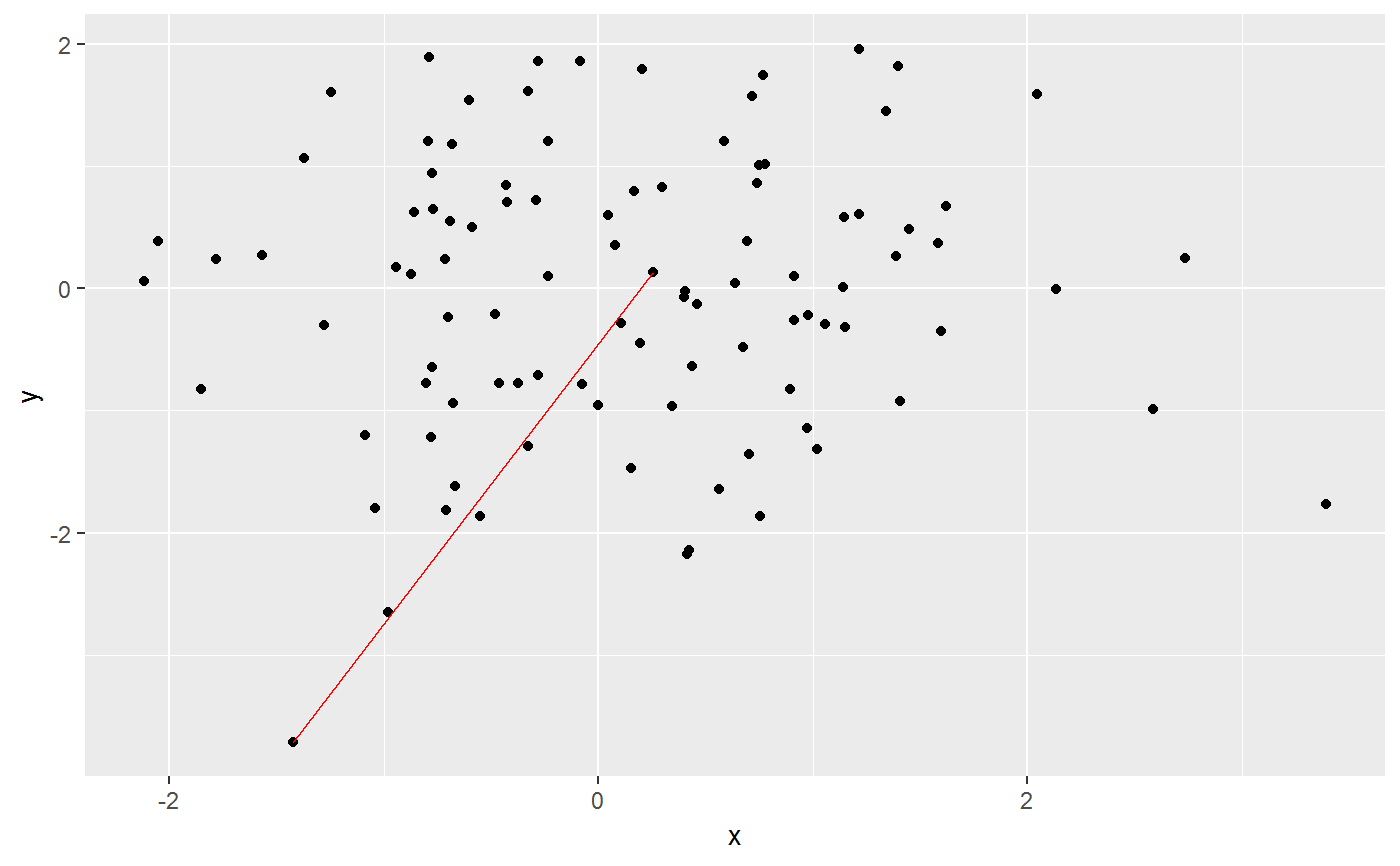To Draw a Line from the central to the farest point
stat_star.RdGiven a points set in data.frame, extends ggplot2 functionality to draw a line from the central to the farthest point.
stat_star(mapping = NULL, data = NULL, geom = "line", position = "identity", na.rm = FALSE, show.legend = NA, inherit.aes = TRUE, ...)
Arguments
| mapping | Set of aesthetic mappings created by [aes()] or [aes_()]. If specified and `inherit.aes = TRUE` (the default), it is combined with the default mapping at the top level of the plot. You must supply `mapping` if there is no plot mapping. |
|---|---|
| data | The data to be displayed in this layer. There are three options: If `NULL`, the default, the data is inherited from the plot data as specified in the call to [ggplot()]. A `data.frame`, or other object, will override the plot data. All objects will be fortified to produce a data frame. See [fortify()] for which variables will be created. A `function` will be called with a single argument, the plot data. The return value must be a `data.frame`, and will be used as the layer data. |
| geom | The geometric object to use display the data |
| position | Position adjustment, either as a string, or the result of a call to a position adjustment function. |
| na.rm | If `FALSE`, the default, missing values are removed with a warning. If `TRUE`, missing values are silently removed. |
| show.legend | logical. Should this layer be included in the legends? `NA`, the default, includes if any aesthetics are mapped. `FALSE` never includes, and `TRUE` always includes. It can also be a named logical vector to finely select the aesthetics to display. |
| inherit.aes | If `FALSE`, overrides the default aesthetics, rather than combining with them. This is most useful for helper functions that define both data and aesthetics and shouldn't inherit behaviour from the default plot specification, e.g. [borders()]. |
| ... | Other arguments passed on to [layer()]. These are often aesthetics, used to set an aesthetic to a fixed value, like `colour = "red"` or `size = 3`. They may also be parameters to the paired geom/stat. |
Examples
library(ggplot2) madedata <- data.frame(x = rnorm(100, mean = 0, sd = 1), y = rnorm(100, mean = 0, sd = 1)) ggplot(madedata, aes(x = x, y = y)) + geom_point() + stat_star(color = "red")
